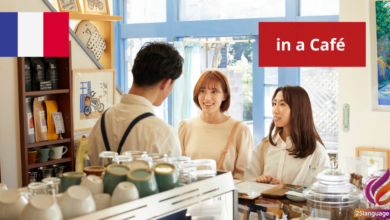French Colors and How to Use Them as Adjectives

Imagine walking through a vibrant French market, where the fruits glisten in vivid reds and yellows, and flowers burst with brilliant hues. Understanding how to describe these colors is key to immersing yourself in the beauty of the French language. In this lesson, you’ll discover not just the names of colors in French, but also how to use them effectively as adjectives, transforming your descriptions and conversations into a vivid tapestry of expression. Let’s paint a colorful journey together!
Exploring the Vibrant World of French Colors
Understanding colors in French is not only about learning the words but also about grasping their grammar rules, particularly regarding gender and agreement. Colors in French can be both adjectives and nouns,which means they must agree in gender and number with the nouns they modify. Such as:
- Un chat noir (A black cat – masculine)
- Une voiture rouge (A red car – feminine)
- Des fleurs jaunes (Yellow flowers – plural)
When talking about colors, remember that most adjectives come after the noun, unlike in English. However, some colors, like “beau” (beautiful) and “grand” (big), may precede the noun. It’s essential to note that colors themselves can also change when used in the plural form. For instance, “bleu” changes to “bleus” for masculine and “bleue” changes to “bleues” for feminine.
| French Color | Gender/Number | English Translation |
|---|---|---|
| Noir | Masculine Singular | Black |
| Noire | Feminine Singular | Black |
| Rouge | Neutral Singular | Red |
| Bleus | Masculine Plural | Blue |
| Bleues | Feminine Plural | Blue |
Understanding Color Adjectives in French
In french, color adjectives typically follow the noun they describe and agree in gender and number. This means that if the noun is feminine, the color adjective must also take a feminine form; similarly, if the noun is plural, the adjective must reflect that as well. For example, the color “bleu” (blue) changes to “bleue” when describing a feminine noun. Therefore, you would say:
- le livre bleu (the blue book – masculine)
- la voiture bleue (the blue car – feminine)
- les livres bleus (the blue books – plural masculine)
- les voitures bleues (the blue cars – plural feminine)
Some colors, however, do not change form irrespective of the gender or number of the noun they describe. Examples include “orange” and “marron” (brown), which remain the same in both masculine and feminine forms. here’s a table summarizing some color adjectives and their forms:
| Color Adjective (French) | Masculine Singular | Feminine Singular | Masculine Plural | Feminine Plural |
|---|---|---|---|---|
| Bleu | Bleu | Bleue | Bleus | Bleues |
| Rouge | Rouge | Rouge | Rouges | Rouges |
| Marron | Marron | Marron | Marron | Marron |
| Orange | Orange | Orange | Oranges | Oranges |
Practical Applications of Colors in Descriptive Language
Colors in french can significantly enhance descriptive language, enabling learners to paint vivid pictures in their conversations and writing. The basic vocabulary for colors includes:
- rouge – red
- bleu – blue
- vert – green
- jaune – yellow
- noir – black
- blanc – white
- orange – orange
- violet – purple
- gris – gray
When using colors in descriptive language, it’s essential to remember that the adjectives must agree in gender and number with the nouns they describe. For example, “un chat noir” (a black cat) keeps “noir” in the masculine form, while “une robe noire” (a black dress) uses the feminine form. Additionally, plural forms require an ‘s’ at the end: “des chats noirs” (black cats) and “des robes noires” (black dresses).Here’s a table that summarizes some useful examples:
| french Example | English Translation | Note on Gender/Number |
|---|---|---|
| un livre bleu | a blue book | masculine singular |
| une voiture rouge | a red car | feminine singular |
| des fleurs jaunes | yellow flowers | feminine plural |
| des arbres verts | green trees | masculine plural |
Using color adjectives effectively can transform plain descriptions into engaging narratives. Phrases such as “un ciel bleu” (a blue sky) or “une chemise violette” (a purple shirt) create striking imagery,while color can also convey emotions,as in “un visage pâle” (a pale face). By mastering the grammatical rules of color usage, learners can enrich their French vocabulary and enhance their descriptive abilities significantly.
Mastering the Use of colors to Enhance Your French Vocabulary
Colors in French are not just descriptors but also enhance your vocabulary when used creatively in various contexts. Understanding the correct forms and agreements is essential since French adjectives, including colors, must agree in gender and number with the noun they modify. For example, the color “rouge” (red) remains the same for both masculine singular and feminine singular forms. However, when applied to plural nouns, the form changes to “rouges.” Here are some key points to remember:
- Masculine singular: rouge – “le livre rouge” (the red book)
- Feminine singular: rouge – “la robe rouge” (the red dress)
- Masculine plural: rouges – “les livres rouges” (the red books)
- Feminine plural: rouges – “les robes rouges” (the red dresses)
In addition to basic colors, French also uses compound forms and secondary colors, making the vocabulary richer. Secondary colors like “violet” (purple), “orange” (orange), and “vert” (green) also follow the same gender rules.Moreover, adjectives of colors can sometimes be used as nouns, particularly when referring to a group of items of that color. as a notable example, “les verts” refers to the greens or green people. Here’s a simple educational table for reference:
| French Example | Rule/Explanation | English Translation |
|---|---|---|
| le ciel bleu | Masculine singular | the blue sky |
| la voiture blanche | Feminine singular | the white car |
| les murs jaunes | Masculine plural | the yellow walls |
| les fleurs roses | Feminine plural | the pink flowers |
| les oranges | Noun form | the oranges (fruit) |
The Conclusion
Conclusion
Bravo! You’ve just completed our lesson on French colors and how to use them as adjectives! Today, we explored a vibrant array of colors, from “rouge” to “violet,” and learned how to skillfully place these adjectives in sentences to describe nouns accurately. Remember, colors in french not only add beauty to your language but also enhance your ability to express feelings and ideas vividly.
Key points to take away include the importance of noun-adjective agreement in gender and number, which is crucial for becoming a fluent speaker. Practicing this will help you gain confidence in using colors to describe everything around you.
Now, I encourage you to apply what you’ve learned! Look around your environment, and try to describe the colorful world you see in French. Whether it’s the “bleu” sky, the “vert” grass, or your favorite “jaune” book cover, every time you use French colors, you’re one step closer to mastering the language.Keep practicing, and don’t hesitate to experiment with new combinations. The more you integrate colors into your vocabulary, the more vibrant your French communication will become. À bientôt et bonne chance!




























